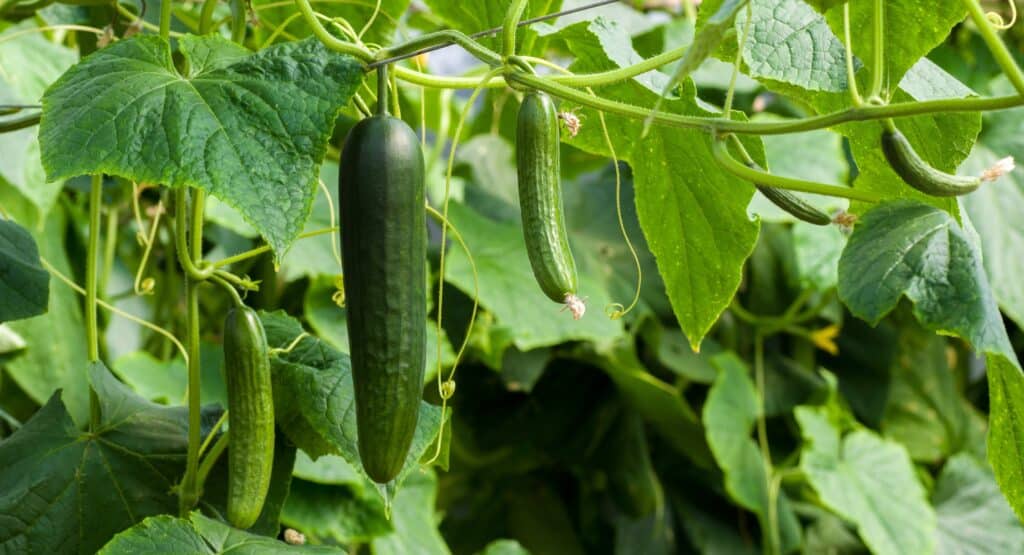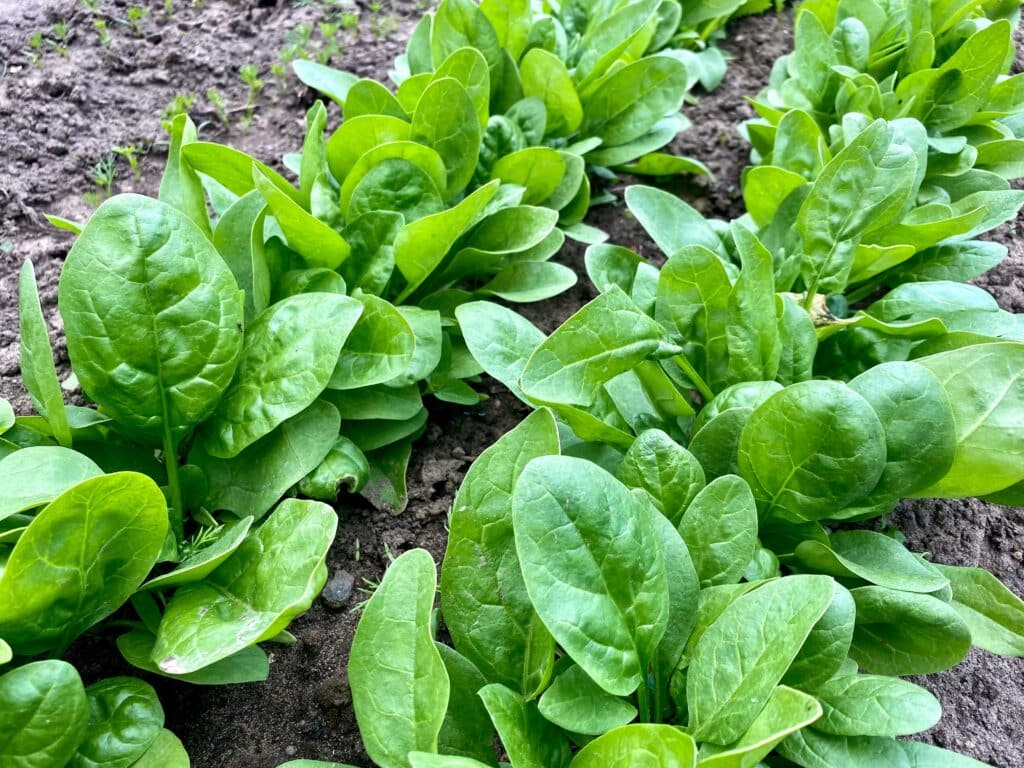Cultivation and agriculture have kept our ancestors alive for centuries, and if you’re looking to stay true to those roots, you may have considered setting up your very own home garden. If you’re new to the gardening world, it can be difficult to know where to start. But the very first step, before anything else, is one of the most fun: choosing what you want to grow! While that may seem a bit overwhelming also, it’s really not. Just consider a few staple foods, things that you and your family use often, and work from there.
Below is a short list of fruits, veggies, and other plants that I have grown before and would choose for my ultimate home garden.
Benefits of a home garden
Although home gardening has grown in popularity over the last few years, it’s hardly a new concept. Ancient cultures have used gardening and agriculture to keep their communities alive for thousands of years. The earliest evidence of small-scale cultivation dates back to 21,000 BCE when the Ohalo II people on the Shores of the Sea of Galilee began planting edible grasses. By roughly 9500 BCE, emmer wheat, einkorn wheat, hulled barley, peas, lentils, bitter vetch, chickpeas, and flax were being grown in the Levant. These became known as the eight Neolithic founder crops.
And while the necessity of a home garden has waxed and waned throughout time, we’re seeing an uptick in people growing their own vegetables and other plants, especially since the COVID-19 pandemic. Since people have been spending more time at home, working remotely, and with the rising cost of groceries, it makes sense that people are warming up to the idea of setting up a home garden.
There are some obvious benefits of small-scale cultivation, like healthier produce and saving money. But lesser known is that gardening can be wonderful for your mental health. Growing a plant, tending to it from seed to harvest, can be extremely satisfying. You’re creating life, which will in turn provide you with sustenance. Gardening also makes you stick to a routine with weeding, watering, pruning, talking to your garden (yes, you should say sweet nothings to your plants, it helps them grow), etc. Routines offer us with some much-needed structure and have been proven to improve mental health. Not to mention, time in nature can help reduce stress levels as well.
What to grow in your home garden
Let’s take a closer look at some of the best and most popular plants to grow at home.
Tomatoes
One of the first plants many people choose to grow at home are tomatoes. Although some people claim that they are somewhat difficult to grow, if you know what to look out for (like signs of blight), they’re usually pretty easy. And they grow well in quite a few different climates, I’ve grown them here in Indiana, and when I lived in the high desert in California, and the weather/humidity levels are very different in each location. Common practice is to grow seedlings inside, then transfer them outside when they grow a little bit, although I’ve also had good luck planting them directly outside as well, you just need to make sure you do it after the last frost of the year. And make sure to set up some cages or fencing for them to climb on.
Cucumbers

Cucumbers, like tomatoes, grow on vines, and they produce bountifully and grow well in most warm climates. Just a few plants are enough to produce for a family of four, you may still even end up with excess, in which case you can pickle them and save for later. They grow really fast and can spread across entire sections of your garden if you don’t have a sturdy trellis in place. If you’re more limited on space, you can opt for bush varieties like ‘Marketmore 76’ or ‘Salad Bush’.
Cannabis
Although weed isn’t necessarily easy to grow, it’s definitely worthwhile if you’re a regular smoker. Commercial pot quality has been in question lately. We know that a huge percentage of crops in legal markets, especially in the west, are infected with hop latent viroid, and while isn’t really an issue for consumers (health-wise), it poses major problems for cultivators, which can in turn translate to higher prices down the line. Additionally, numerous reports have outlined the number of contaminants found in dispensary weed, such as heavy metals, pesticides, microbes, and residual solvents.
Not to mention, weed is pretty expensive in some parts of the country, and not easily accessible for everyone. So if you want to save money and be certain that the pot you’re smoking is of the finest quality, it might be wise to invest some grow equipment and try to set something up at home.
Mushrooms
So, mushrooms are technically not plants, they’re fungi, but they’re pretty easy to grow, don’t take up much space, and offer several medical benefits to consumers. And with over 14,000 species of mushrooms to choose from, you’re never at a loss for options and variety. Many people have been growing medicinal and magic mushrooms at home, as evidenced by the recent boom seen in the mushroom cultivation market. These days, you can buy kits that provide you with absolutely everything you need to successfully grow fungi, all you need to do is find your own spores and make sure to keep the grow space free from any contamination.
Corn
This may not apply everywhere, but here in the Midwest, you see A LOT of corn. And if you’ve ever had freshly-picked corn, as opposed to what you find at most grocery stores, the difference in flavor is undeniable. I planted a couple rows of corn last summer and it grew like crazy. The plants were about 7 feet tall and full of ears. We had both yellow and white corn, and both were delicious but I liked the white corn better. Either way, they were very hassle-free plants, and I chose to skip the indoor seedling stage and plant them directly outside also.
Melons
Although melons don’t do well everywhere, I found them fun and rewarding to grow. Melons are a tasty summer treat that are hydrating, full of antioxidants such as beta-carotene and lycopene, and they’re good sources of vitamins and electrolytes. In areas with long, cold winters, melon growing can be a challenge, especially watermelon and honeydew which are more sensitive to the cold than cantaloupe. For the best results, plant your melons when daytime temps are averaging 70 degrees or more, and place them somewhere hot and sunny with well-draining soil. Melons ripen when they ripen, so keep an eye on your crops and plan to harvest them as they become ready.
Fruit-bearing trees

Fruit-bearing trees and bushes are a great addition to any outdoor space. Not only are they beautiful and provide a bit of shade in what might otherwise be a very hot, sunny area, they’re also really easy to tend to once they start growing. Most produce annually and you don’t need to do anything to them when they reach the adult stage. It’s passive gardening at its finest. You can grow apples, pears, avocados, oranges, lemons, persimmons, various berries including the flu-fighting elderberry which has skyrocketed in price per pound following the COVID-19 pandemic, and so much more. For those who don’t feel like waiting the few years it can take for a full-grown tree to produce, you can look for dwarf varieties or fruit-bearing bushes if available.
Peppers
Pepper plants are great because they don’t take up much space and only one plant will produce multiple harvests for weeks. So you can plant several different pepper types in a pretty small area. If you’re growing your own peppers, you’ll also have access to a much larger variety of peppers than what you would find at the grocery store. You can plant sweet peppers like bells, bananas, and shishitos, or hot peppers like jalapenos, habaneros, and poblanos. What’s possibly best about having a pepper garden is that you can make your own salsas and hot sauces. And if you’re a hot sauce fiend like me, you know it’s hard to find good, authentic tasting hot sauces at stores like Walmart or Kroger.
Variegated Plants
Although this isn’t a plant that produces something you can eat or otherwise consume like everything else on the list, it’s a favorite among many gardeners because they’re versatile, provide a little extra shade to sections of the garden, and give the entire area a more organized and sophisticated look with their large green and white leaves. I have some hostas around the edge of my garden, and I love the flair they add. Even though hostas do provide shade, they also need some shade themselves, so don’t plant them in an area that’s completely exposed to sunlight for the majority of the day.
Spinach

I’m a big fan of spinach. Leafy green vegetables are great and although kale is having an extended moment of glory, I’m not really of a fan of it. I much prefer spinach, and you can use it in so many things to get those extra nutrients that it offers. Mix into pastas, lasagnas, or casseroles, use it raw in sandwiches, smoothies, and salads; and much more. Spinach is easy to grow from seed in early spring, but you can also plant a late summer crop to harvest in fall since it grows pretty fast.
Final thoughts
Obviously, this is just my list of preferred plants, and those that I have experience with, but the beautiful thing about a home garden is that it’s your own creation, so you can plant whatever you want in it. Although it’s a bit late in the season for most of the US, you can still grow many plants indoors or in greenhouses if you want to garden year-round.
What are your favorite plants to cultivate? Any gardening tips you want to share? Drop us a line in the comment section below, we love to hear from our readers!
Hello readers. We’re happy to have you with us at Cannadelics.com; a news source here to bring you the best in independent reporting for the growing cannabis and hallucinogen fields. Join us frequently to stay on top of everything, and subscribe to our Cannadelics Weekly Newsletter, for updates straight to your email. Check out some awesome promos for cannabis buds, smoking devices and equipment like vapes, edibles, cannabinoid compounds, amanita mushroom products, and a whole bunch more. Let’s all get stoned together!









